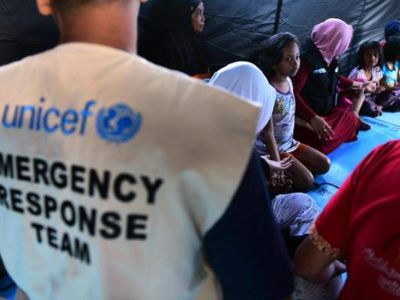Cover image: © UNICEF/UN08247/Khuzaie
This module focuses on the first two steps of Emergency Response Preparedness (ERP) planning i.e., Step 1. Risk analysis and monitoring and Step 2. Scenario building and needs estimate.
During this module, we will understand how to review main hazards, rank disaster risks, analyse risk predicting aggravating factors and chain of events that could lead to malnutrition, and define a method to monitor these risks.
Then, for medium to high disaster risks, we will learn how to develop a short planning scenario and estimate persons in needs (PIN) and key immediate needs.
Learning objectives
By the end of this module, you will be able to:
- Appreciate how to do risk identification, analysis, and risk ranking based on their likelihood and potential impact.
- Develop a planning scenario depending on how a potential disaster risk of high gravity could evolve and how to define key planning assumptions such as predicted duration of crisis, geographical locations, affected groups and Nutrition PIN.
Audience
This module is an intermediary-level course aimed at anyone who is interested in furthering their skills and knowledge in nutrition cluster coordination in humanitarian contexts, and who needs to coordinate and collaborate with the humanitarian architecture on this topic. It is part of the recommended learning path for national nutrition cluster coordinators aiming to progress to senior level roles.
Length
It should take you about 45 minutes to complete this self-paced course.
Methodology
This course is composed of a single short self-paced animated module, including various examples and activities.
Structure
Introduction
5 min
Lesson 1: Risk analysis and monitoring
20 min
Lesson 2: Scenario building
15 min
Summary
5 min
Suggested prior learning
Introduction to Emergency Response Preparedness (ERP)
Contact details
For technical issues, you can contact https://www.nutritioncluster.net/Ask_question
